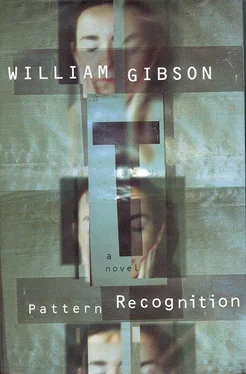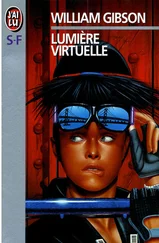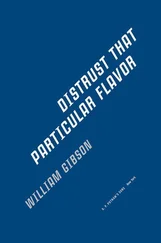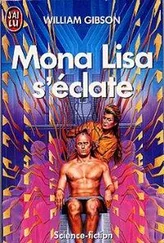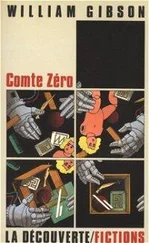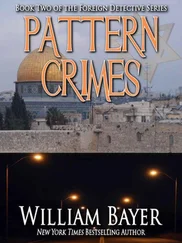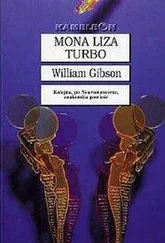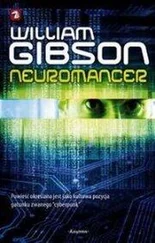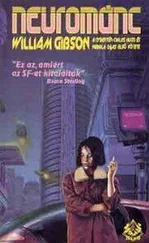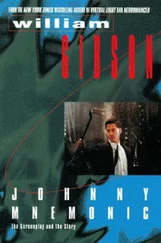Whatever, Dorotea's looking serious about it. Serious as cancer. On the table in front of her, perhaps a millimeter too carefully aligned, is an elegant gray cardboard envelope, fifteen inches on a side, bearing the austere yet whimsical logo of Heinzi & Pfaff. It is closed with one of those expensively archaic fasteners consisting of a length of cord and two small brown cardboard buttons.
Cayce looks away from Dorotea and the envelope, noting that a great many Nineties pounds had once been lavished on this third-floor meeting room, with its convexly curving walls of wood suggesting the first-class lounge of a transatlantic zeppelin. She notices threaded anchors exposed on the pale veneer of the convex wall, where once had been displayed the logo of whichever agency previously occupied the place, and early warning signs of Blue Ant renovation are visible as well: scaffolding erected in a hallway, where someone has been examining ductwork, and rolls of new carpeting stacked like plastic-wrapped logs from a polyester forest.
Dorotea may have attempted to out-minimalize her this morning, Cayce decides. If so, it hasn't worked. Dorotea's black dress, for all its apparent simplicity, is still trying to say several things at once, probably in at least three languages. Cayce has hung her Buzz Rickson's over the back of her chair, and now she catches Dorotea looking at it.
The Rickson's is a fanatical museum-grade replica of a U.S. MA-1 flying jacket, as purely functional and iconic, a garment as the previous century produced. Dorotea's slow burn is being accelerated, Cayce suspects, by her perception that Cayce's MA-1 trumps any attempt at minimalism, the Rickson's having been created by Japanese obsessives driven by passions having nothing at all to do with anything remotely like fashion.
Cayce knows, for instance, that the characteristically wrinkled seams down either arm were originally the result of sewing with pre-war industrial machines that rebelled against the slippery new material, nylon. The makers of the Rickson's have exaggerated this, but only very slightly, and done a hundred other things, tiny things, as well, so that their product has become, in some very Japanese way, the result of an act of worship. It is an imitation more real somehow than that which it emulates. It is easily the most expensive garment Cayce owns, and would be virtually impossible to replace.
“You don't mind?” Stonestreet producing a pack of cigarettes called Silk Cut, which Cayce, never a smoker, thinks of as somehow being the British equivalent of the Japanese Mild Seven. Two default brands of creatives.
“No,” says Cayce. “Please do.”
There is actually an ashtray on the table, a small one, round and perfectly white. As archaic a fixture in America, in the context of a business meeting, as would be one of those flat and filigreed absinthe trowels. (But in London, she knew, you might encounter those as well, though she'd not yet seen one at a meeting.) “Dorotea?” Offering the pack, but not to Cayce. Dorotea declining. Stonestreet puts a filter tip between his tidily mobile lips and takes out a box of matches that Cayce assumes were acquired in some restaurant the night before. The matchbox looks very nearly as expensive as Dorotea's gray envelope. He lights up. “Sorry we had to haul you over for this, Cayce,” he says. The spent match makes a tiny ceramic sound when he drops it into the ashtray.
“It's what I do, Bernard,” Cayce says.
“You look tired,” says Dorotea.
“Four hours difference.” Smiling with only the corners of her mouth.
“Have you tried those pills from New Zealand?” Stonestreet asks. Cayce remembers that his American wife, once the ingénue in a short-lived X-Files clone, is the creator of an apparently successful line of vaguely homeopathic beauty products.
“Jacques Cousteau said that jet lag was his favorite drug.”
“Well?” Dorotea looks pointedly at the H&P envelope.
Stonestreet blows a stream of smoke. “Well yes, I suppose we should.” They both look at Cayce. Cayce looks Dorotea in the eye. “Ready when you are.”
Dorotea unwinds the cord from beneath the cardboard button nearest Cayce. Lifts the flap. Reaches in with thumb and forefinger.
There is a silence.
“Well then,” Stonestreet says, and stubs out his Silk Cut.
Dorotea removes an eleven-inch square of art board from the envelope. Holding it at the upper corners, between the tips of perfectly manicured forefingers, she displays it to Cayce.
There is a drawing there, a sort of scribble in thick black Japanese brush, a medium she knows to be the in-house hallmark of Herr Heinzi himself. To Cayce, it most resembles a syncopated sperm, as rendered by the American underground cartoonist Rick Griffin, circa 1967. She knows immediately that it does not, by the opaque standards of her inner radar, work. She has no way of knowing how she knows.
Briefly, though, she imagines the countless Asian workers who might, should she say yes, spend years of their lives applying versions of this symbol to an endless and unyielding flood of footwear. What would it mean to them, this bouncing sperm? Would it work its way into their dreams, eventually? Would their children chalk it in doorways before they knew its meaning as a trademark?
“No,” she says.
Stonestreet sighs. Not a deep sigh. Dorotea returns the drawing to its envelope but doesn't bother to reseal it.
Cayce's contract for a consultation of this sort specifies that she absolutely not be asked to critique anything, or provide creative input of any sort. She is only there to serve as a very specialized piece of human litmus paper.
Dorotea takes one of Stonestreet's cigarettes and lights it, dropping the wooden match on the table beside the ashtray. “How was the winter, then, in New York?”
“Cold,” Cayce says.
“And sad? It is still sad?”
Cayce says nothing.
“You are available to stay here,” Dorotea asks, “while we go back to the drawing board?”
Cayce wonders if Dorotea knows the cliché. “I'm here for two weeks,” she says. “Flat-sitting for a friend.”
“A vacation, then.”
“Not if I'm working on this.”
Dorotea says nothing.
“It must be difficult,” Stonestreet says, between steepled, freckled fingers, his red thatch rising above them like flames from a burning cathedral, “when you don't like something. Emotionally, I mean.”
Cayce watches Dorotea rise and, carrying her Silk Cut, cross to a sideboard, where she pours Perrier into a tumbler.
“It isn't about liking anything, Bernard,” Cayce says, turning back to Stonestreet, “it's like that roll of carpet, there; it's either blue or it's not. Whether or not it's blue isn't something I have an emotional investment in.”
She feels bad energy brush past her as Dorotea returns to her seat. Dorotea puts her water down beside the H&P envelope and does a rather inexpert job of stubbing out her cigarette. “I will speak with Heinzi this afternoon. I would call him now but I know that he is in Stockholm, meeting with Volvo.”
The air seems very thick with smoke now and Cayce feels like coughing.
“There's no rush, Dorotea,” Stonestreet says, and Cayce hopes that this means that there really, really is.
CHARLIE Don't Surf is full, the food California-inflected Vietnamese fusion with more than the usual leavening of colonial Frenchness. The white walls are decorated with enormous prints of close-up black-and-white photographs of 'Nam-era Zippo lighters, engraved with crudely drawn American military symbols, still cruder sexual motifs, and stenciled slogans. These remind Cayce of photographs of tombstones in Confederate graveyards, except for the graphic content and the nature of the slogans, and the 'Nam theme suggests to her that the place has been here for a while.
Читать дальше
